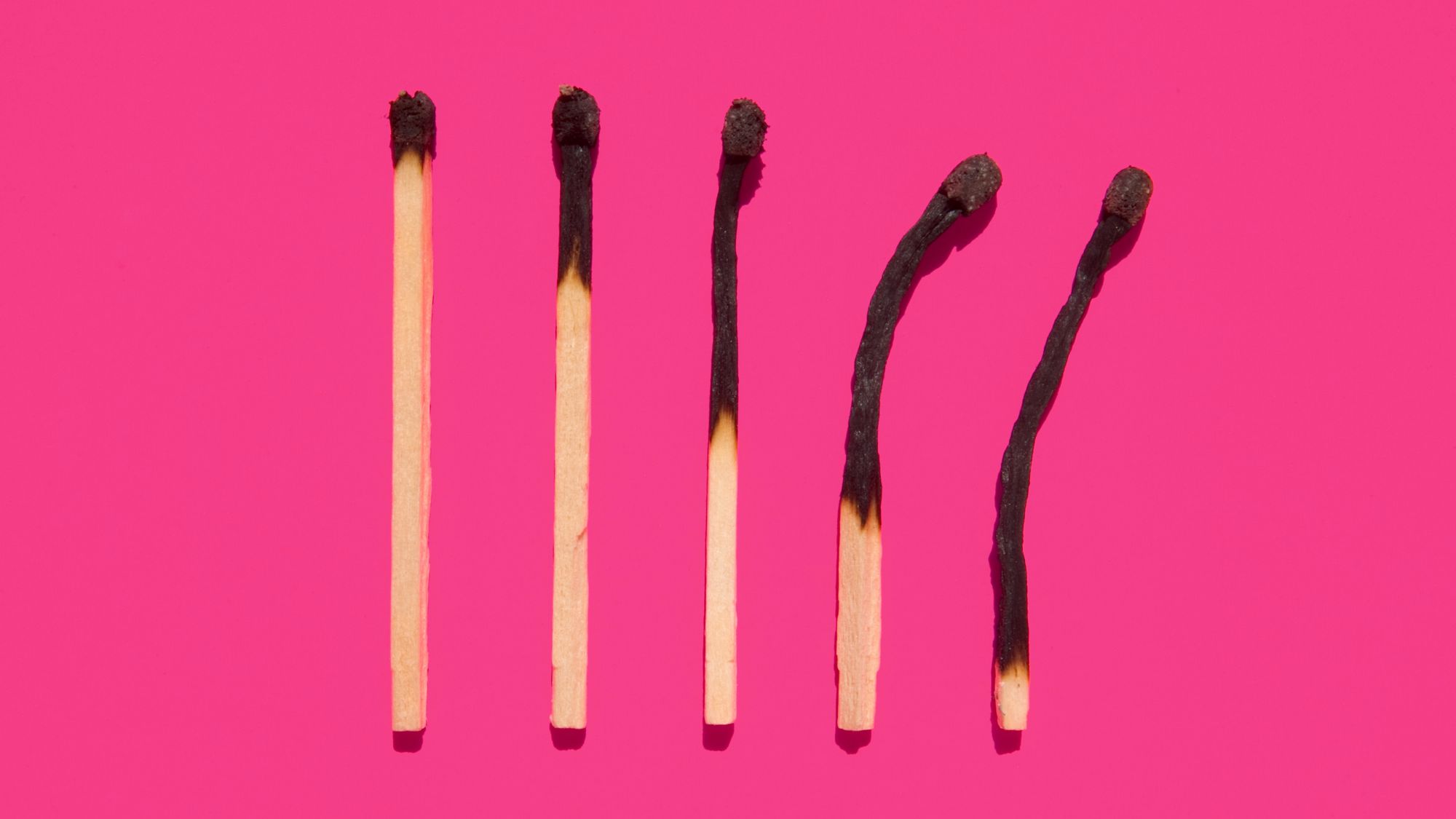Burnout: “My days blurred into late nights at the office, fuelled by stress and a compulsion to prove myself”
Life after burnout: How women can recognise, recover, and reclaim balance


I didn’t think it would happen to me. As an ambitious young professional working in a high-pressure corporate law firm, I thrived on long hours in an environment that rewarded perfectionism. My days blurred into late nights at the office, fuelled by stress and a compulsion to prove myself. I spent more time with lending agreements and privacy notices than I did with my friends or family. Even the perks—the in-house gym, the private dining rooms, the on-call doctors—became a part of the performance. It all seemed glamorous on the surface, but beneath the sheen, I was unravelling.
Burnout didn’t hit me all at once. It crept in slowly, weaving itself into my life until it became impossible to ignore. I cried constantly, overwhelmed by emotions I couldn’t control. Every criticism, no matter how minor, felt like proof I was a failure. I agonised over every decision, convinced I was making mistakes. My attention to detail—a cornerstone of my success—began to slip as exhaustion clouded my judgment. Each misstep confirmed the voice in my head that told me I was an imposter. Eventually, I cracked.
Beneath the sheen, I was unravelling
My breaking point came after a particularly gruelling week when I realised I could no longer trust myself, my work, or my ability to keep going. It landed me in the Nightingale, a private mental health hospital in west London. For a month, the relentless cycle of stress-stamped Post-it notes, late-night taxis, and glittering networking evenings of martinis and merlot was replaced by group therapy sessions and white hospital sheets. Instead of drafting business sale agreements, I was handed cognitive behaviour therapy worksheets to help me unpick the patterns that had driven me to this place.
The corporate culture I once belonged to is built on insecurity, with burnout as its inevitable by-product. This isn’t a hidden truth; in some firms, it’s openly acknowledged. Discontented workers, driven by fear and self-doubt, are pushed to strive harder, work longer, and sacrifice themselves at the altar of perfection. Exhaustion becomes a badge of honour while struggling is framed as a prerequisite for success. In this world, if you’re not burned out, you’re seen as complacent. If you’re not on the edge, you’re failing.
And who are the perfect candidates for such a toxic system? Insecure overachievers.
If you’re not burned out, you’re seen as complacent.
For women, this trap is especially insidious because insecurity is ingrained in us from birth. From the beginning, we are conditioned to doubt our worth and to prove it through unattainable standards. We are taught to excel without imposing, to achieve without overstepping, and to strive while remaining “nice.” In the workplace, this means showing up polished and poised while quietly shouldering the weight of unpaid emotional labour, safety concerns, and the crushing expectation to be all things to all people. These impossible expectations create a perfect storm of chronic stress, self-doubt, and a relentless need to prove oneself—all of which pave the road directly to burnout.
The connection between insecurity, overachievement, and burnout becomes painfully clear when you examine how toxic workplaces operate. These environments demand excellence, reward overcommitment, normalise stress, and push workers far beyond healthy limits. For those who already feel their value depends on meeting impossible standards, the pressure becomes suffocating. I internalised the belief that my worth was tied to relentless effort—always striving but never arriving. Burnout wasn’t a sudden collapse; it was the inevitable result of years of trying to meet expectations that were designed to be unachievable.
Celebrity news, beauty, fashion advice, and fascinating features, delivered straight to your inbox!
When Olivia, the protagonist of my novel The Rag Doll Contract, lands in the Nightingale Hospital—a place I know intimately from my own experience—she meets several professionals from high-pressure jobs. “Why are you here?” she asks one of them. “The same reason we all are,” the woman replies. The subtext is clear: insecurity. It’s what drives so many of us to burnout.
I internalised the belief that my worth was tied to relentless effort—always striving but never arriving
Olivia’s words in the epigraph of The Ragdoll Contract encapsulate the toxic relationship between insecurity and the relentless drive that keeps micro-metropolises like the City alive: “Imagine the soaring buildings are laced through with a fine thread. I cut this thread, and the whole City comes crumbling down—glass, bricks, chairs, desks, and everything. This thread is shaky and insecure, but it holds whole buildings upright, so in some ways, it is stronger than anything.” This image reveals a brutal truth: insecurity is not a flaw in the system—it is the system. It’s what keeps people working late, prioritising the firm above their health, and chasing targets at the expense of their bodies and minds. The fragility of this thread is what drives the machine forward, but it’s also its greatest weakness. When insecurity fuels overachievement, it creates a toxic cycle that inevitably leads to burnout—an individual’s collapse mirroring the system’s fragility.
Recognising burnout begins with identifying the warning signs. Chronic fatigue, difficulty concentrating, irritability, emotional dysregulation and a sense of detachment from work or life are all red flags. For many women, burnout can also show up as feelings of guilt or shame for not “handling everything.” Recovery, however, starts with self-compassion. It means understanding that your worth is not tied to your productivity and that stepping back is not a failure.
Insecurity is not a flaw in the system—it is the system
Reclaiming balance is both a personal and systemic endeavour. On an individual level, setting boundaries, seeking support, and prioritising self-care are essential. Therapy, journaling, or even reconnecting with hobbies can help restore a sense of self outside of work. On a broader scale, organisations must take responsibility for fostering healthier environments. This includes promoting realistic workloads, encouraging open conversations about mental health, and ensuring that leaders model balanced behaviours.
Burnout is not inevitable, even in high-pressure environments. By recognising the signs early and addressing the underlying insecurities that drive overachievement, it’s possible to recover and rebuild. My experience taught me that true success doesn’t come from running yourself into the ground. It comes from knowing your limits, valuing your well-being, and reclaiming your life on your own terms.
Dorothy Herson is a mental health activist and author of The Rag Doll Contract
